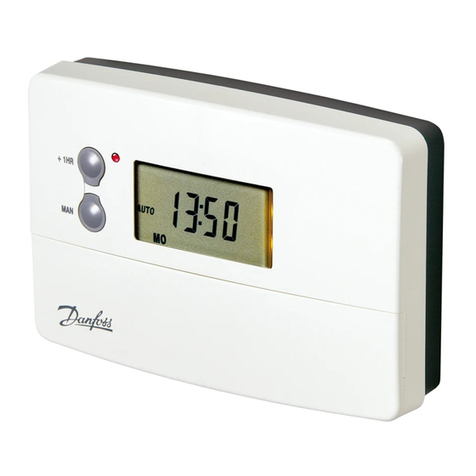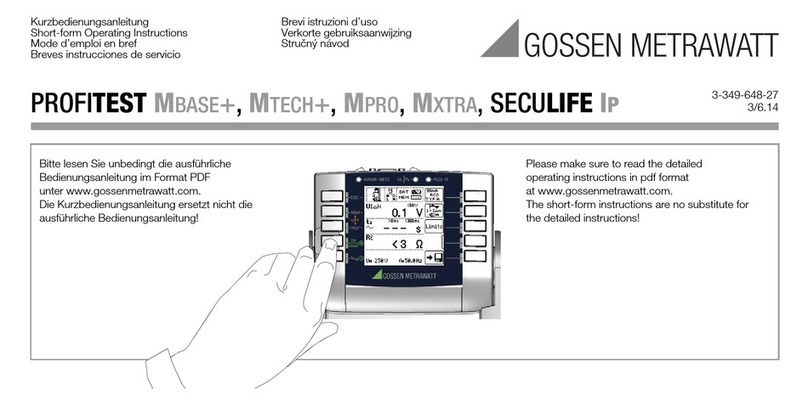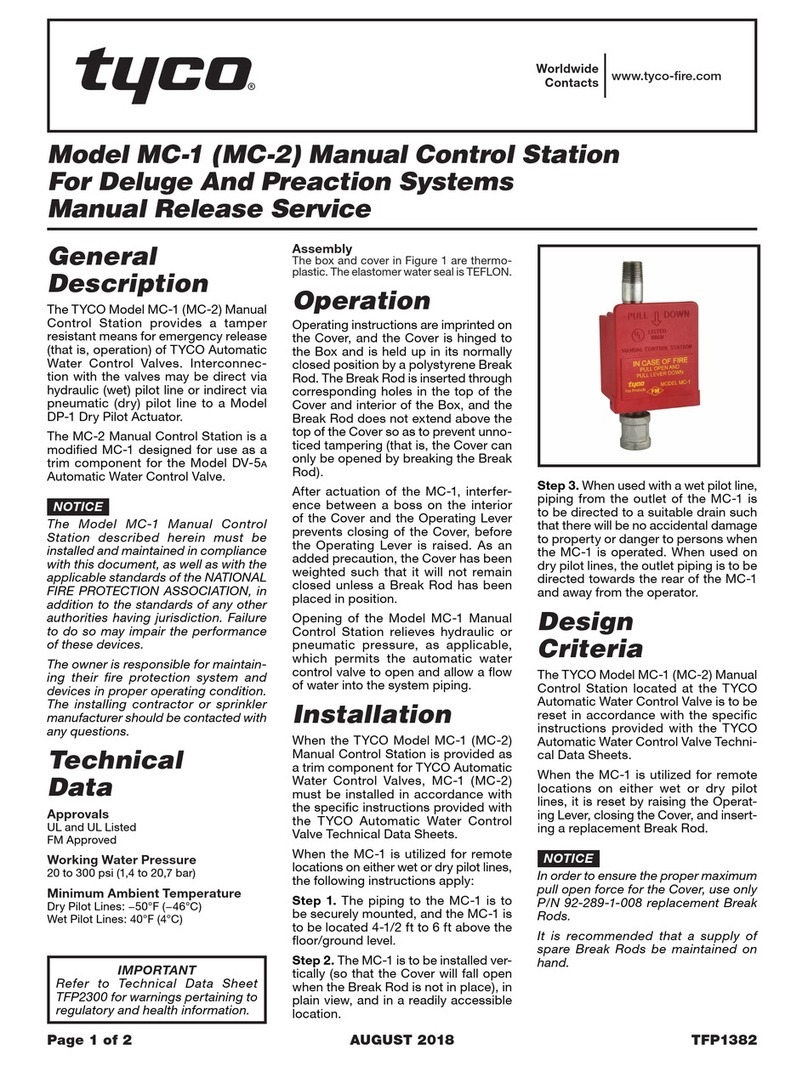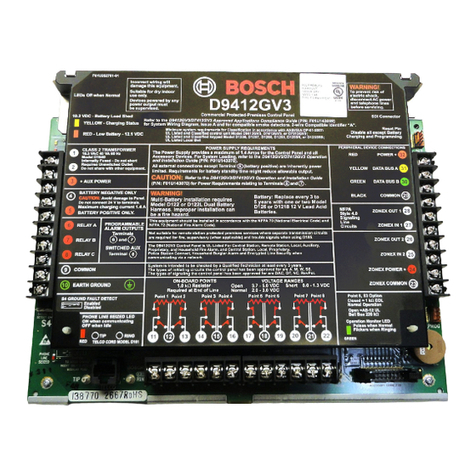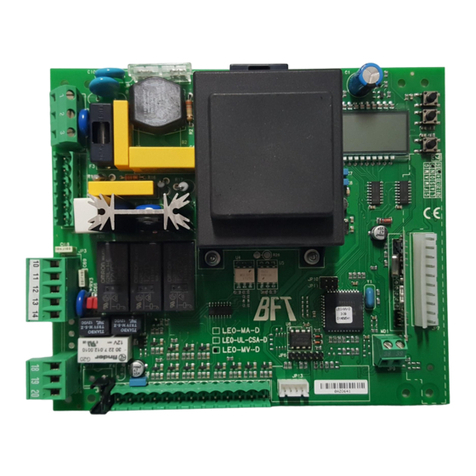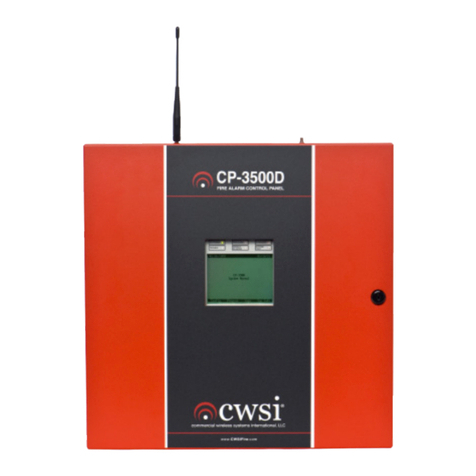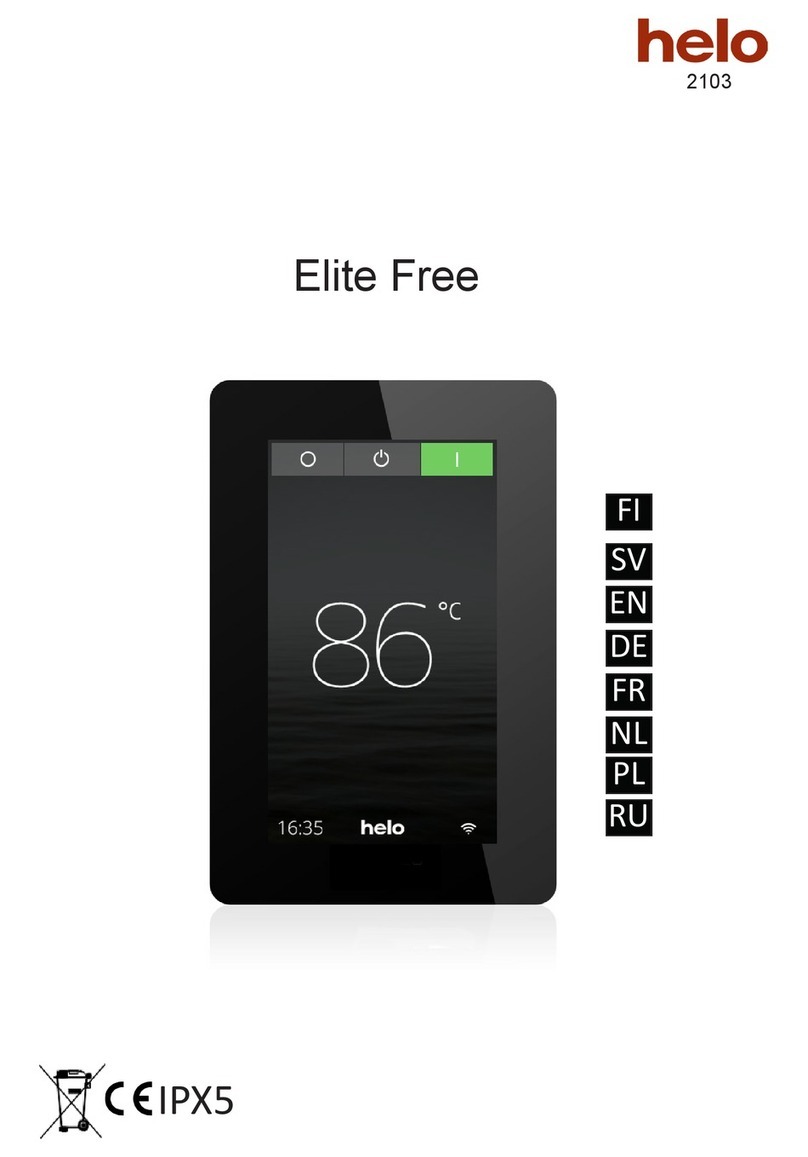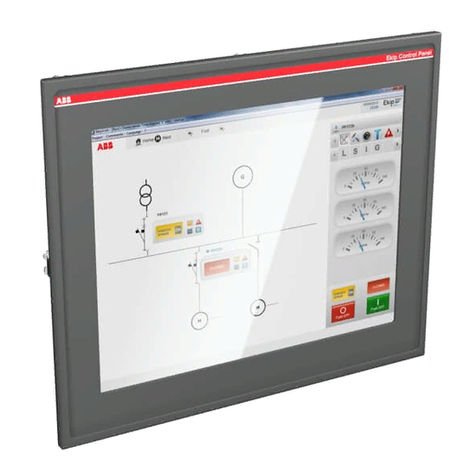Ecleree nuo2 User manual

USER MANUAL
MANUAL DE INSTRUCCIONES
MANUEL UTILISATEUR
BEDIENUNGSANLEITUNG


3
User Manual Contents
1. IMPORTANT REMARK 04
1.1. Safety Instructions 04
1.2. Warranty description 04
2. INTRODUCTION 05
3. INSTALLATION 05
3.1. Audio input connections 06
3.2. Audio outputs connections 07
4. QUICK START 08
5. OPERATION AND USAGE MANUAL 09
5.1. Start-up 09
5.2. Control Description 09
6. FURTHER CONSIDERATIONS 11
7. FUNCTION LIST 12
8. FUNCTION DIAGRAM 12
9. TECHNICAL CHARACTERISTICS 43
10. DIAGRAMS 44
10.1. Figures 44
10.1.1. Connection diagram 44
10.1.2. Rack ear system 45
10.1.3. Internal jumper configuration 46
11. BLOC DIAGRAM 47
All numbers subject to variation due to production tolerances. ECLER S.A. reserves the right to make changes or improvements in
manufacturing or design which may affect specifications.

4
1. IMPORTANT REMARK
1.1. Safety Instructions
In order to get the optimum operation and efficiency from your mixing unit, it is VERY IMPORTANT -before you
plug anything -to read this manual very carefully and take seriously into account all considerations specified within
it. We strongly recommend that its maintenance be carried out by our Authorised Technical Services.
This apparatus must be earthed through its mains cable.
Do not expose the unit to rain or water splashes, and do not place liquid containers or incandescent
objects like candles on top of the unit. Do not obstruct the ventilation shafts with any kind of material.
Any change in the configuration of the unit must be carried out by a qualified technician. Should any
connection /disconnection task be done, always disconnect the unit from the mains supply.
1.2. Warranty Descriptions
Your ECLER equipment has undergone exhaustive laboratory and quality control tests before leaving the factory.
Nevertheless, your may be in need of our Technical Service during the period covered by the Guarantee or
afterwards. In that case, carefully protect your equipment in its original packet and send it to our Technical Service
with the transport and insurance paid. Attach a photocopy of your Guarantee Certificate and a detailed description
of the defect you have observed.
ECLER, S.A. guarantees its ECLER products against material or fabrication defects for a ONE-YEAR period (3
YEAR period in SCLAT and NUO series mixers and in the SPM technology amplifiers and 5 YEAR in the
ETERNAL potentiometers) after the date of original purchase.
ECLER, S.A., will repair the defective equipment within the aforementioned period, with no charge for parts and
labour.
To ensure the validity of the Guarantee, it is essential that the attached Guarantee, Registration Card is filled out
correctly and remitted to your ECLER distributor, within 10 DAYS after date of purchase.
The Guarantee is non-transferrable and protects the original buyer only.
The Guarantee does not cover:
-Damages caused by mistreatment or negligent handling, lack of elementary precautions, disregard to the
instructions in the manual, faulty connection or accidents.
-Sets that have been manipulated, altered or repaired other than at the authorized Technical Service centers.
-The exterior fittings and electro-mechanical parts, nor their wear due to use.
-Shipping and insurance expenses, nor for damages the set may incur during its transport.
ECLER, S.A., will not be held responsible for any direct or indirect damage, loss or other damage originated by or
relating to the set.
This Guaranteed is valid only for repairs or services carried out at an authorized Technical Service Center.

5
2. INTRODUCTION
Congratulations! You are the owner of a genuine ECLER professional equipment. The NUO2 has been carefully
designed in collaboration with leading dj performers and advance music producers, developed with the highest
quality components, and manufactured in-house (Barcelona-Spain) under strict quality controls.
The NUO2 is a three-channel stereo mixer with capacity for 8 separate sound sources.
Due to its robustness and format, the NUO2 is mainly dedicated to professional mixing applications (club,
homestudio), or anywhere where a compact sized mixer is required.
3. INSTALLATION
The first thing to take into consideration when placing your NUO2 is your comfort and an easy access to all the
connections. The NUO2 is basically conceived as a tabletop mixer and its usual placement will be between two
vinyls or CD players. The mixer has a 14.57’’ (37cm) depth and 6.3’’ (16cm) width format. The optional metallic side
profiles kit allows you to firmly fix your mixer to the surface over which it is placed or over its own profiles (Fig.1).
These profiles also allow to tilt the mixer's position for an easier operation.
Because of the high gain of the PHONO and MICROPHONE inputs, always try to place the mixer as far away as
possible from noise sources (dimmers, engines, etc.) and mains wires. For the very same reason, and under any
circumstance, you should never remove the unit's metallic cover.
The power consumption of the NUO2 is very low, so they do not need any cooling, but you should avoid extreme
temperatures and the atmosphere should be as dry and dust free as possible.
The NUO2 operates now with a new universal input power supply “Switching Power Supply” and can perfectly
works without any internal modification from 90V to 264V –47 to 63Hz. Make sure that the mains-wire is far away
from the signal-cables in order to avoid any possible audio hum.
In order to protect the unit from an eventual electrical overload it carries a T 500mA fuse. Should it ever blow up,
unplug the unit from mains and replace it with an identical one. If the new fuse blows again contact immediately
with our authorized technical service.
ATTENTION: NEVER SHORT-CIRCUIT THE SECURITY PATH NOR USE A HIGHER VALUE FUSE.
CAUTION: Fuse substitutions have to be performed by a qualified technician.

6
3.1. Audio input connections
H-Line 1 CD Deck
Phono 1 Turntable
L-Line 1 Computer, Tape players…
H-Line 2 CD Deck
Phono 2 Turntable
L-Line 2 Computer, Tape players…
Micro 3 Microphone
H-Line 3 CD Deck
-Phono Inputs:
Phono Turntables must be fitted with a magnetic cartridge with nominal output level between -55dBV and -25dBV
(1,77 to 56mV). The PHONO inputs (31) of the NUO2 have a high headroom (margin before saturation) and it can
handle higher output cartridges than what is usual. These inputs are supplied with a nominal input sensitivity of
-40dBV(10mV). The NUO2 features a ground connection post to which the ground cable of the turntable should be
connected.
-Line Inputs:
Given the important level differences between usual LINE and CD sources, the NUO2 provides specialized inputs
for each source. The sensitivity of the HIGH LINE (30) input is 0dBV (1V), while the LOW LINE (32) sensitivity is
-10dBV(316mV). CD Players, DAT, MP3, and DVD Audio should be connected to the HIGH LINE input. Tape
players, tuners and some production devices (samplers, sequencers) should be connected to the LOW LINE input.
-Microphone Inputs:
The MIC input (28) is ready for a nominal input level of -50dBV (3.16 mV) and is equipped with ¼" JACK connector.
The connection of balanced signals is as follows:
Hot or direct signal >Tip
Cold or inverted signal >Ring
Ground >Sleeve
Low impedance (200 to 600Ω) monophonic microphones must be used. For non balanced microphones we
recommend monophonic jack plugs although stereo ones are also suitable if the ring is shortcircuited to the sleeve.

7
3.2. Audio outputs connections
Out 1 Main power amplifier
Out 2 Booth/Room2 power amplifier
Rec Recording
External FX External effect device
(Send and Return) (Input and Output)
Monitor Headphones
-Master Output 1:
These stereo outputs feed the main house P.A. system through a XLR3 Balanced connections. The OUT 1 (26-27)
level is set at 0dBV (1V) but can be changed to +6dBV (2V) through internal jumpers. OUT 1 is controlled by
MASTER 1 (22) level potentiometer.
-Master Output 2:
Commonly used as an independent local "Booth" output for the DJ. This stereo OUT 2 (29) has unbalanced RCA
connections and its level is set at 0dBV (1V) but can be changed to +6dBV (2V) through internal jumpers. The
OUT 2 level controlled by the MASTER 2 (21) potentiometer.
-Recording Output:
This output pair uses RCA type connectors. REC (25) is placed on the rear connection panel. The nominal level of
the REC output is 0dBV(1V).
-External loop:
The RCA type EXTERNAL FX output SEND (23) and input RETURN (24) allow you to create an external loop with
any effect, sampler or sequencer device. The signal sent to EXTERNAL FX SEND output is selected PRE-or
POST-fader by the FX SEND toggle switch, while its associated knob determines the level.
The nominal levels of the SEND output and RETURN input is 0dBV(1V).
-Headphones:
In order to obtain a high performance, these should be of the high impedance type (200-600Ω). Plug them to the
MONITOR (20) output, in the front panel, by means of a standard 1/4" stereo jack. Sleeve is Ground, Ring is Right
Channel and Tip is Left Channel.

8
4. QUICK START
Install and connect the NUO2 as described in the
INSTALLATION paragraph nº1.
We will describe a “Quick Start” procedure using the H-
LINE input of channel 1 and headphone monitoring output
only.
1st-Set the channel controls. Set Channel 1 GAIN,
TREBLE, MID, BASS rotary controls to their detented
centre position. Set the channel fader to its down position.
2nd-Adjust the MONITOR VOL (19) to its minimum, and
move the MONITOR PFL/MIX (14) control to MIX position.
3rd-Switch ON the CD Player connected to the H-LINE
input of channel 1.
4th-Connect a pair of headphones to the MONITOR Jack
output (20).
5th-Connect the AC main power cord to the back of the
mixer and switch ON the mixer.
6th-Check that the POWER LED below the VU-Meter is lit.
7th-Start the reproduction of a CD music track.
8th-Press the yellow PFL (9) button on channel 1and
adjust GAIN so that the left VU-Meter stays around 0dBV.
9th-Set the channel fader (13) to its up position and place
the crossfader (16) on the "CHANNEL 1" side.
10th-Adjust the MONITOR VOL (19) in order to reach a
"comfort" sound level in your headphones.
11th-Check the powerful 3 band stereo equalization (3-4-5).
The EQ system is designed for creative sound
manipulation: each band can be independently isolated
(OFF) through a large ergonomic rotary control, and the red
ISOLATOR switches additionally allow a fast “kill” effect on
any of the selected frequency bands.
12th-Check the crossfader (16) action.
The crossfader will allow you to crossfade between the
signals connected to channels 1 & 2 of the mixer. The
movement of the crossfader allows you to create a smooth
music track blend or fast “scratch” sound cuts. The fade
curve can be adjusted thanks to the SHAPE control
(rounded or square slope).
For further operations, please read the rest of this manual.

9
5. OPERATION AND USAGE MANUAL
5.1. Start-up
To switch the mixer on push the switch labelled POWER (34) located in the rear panel. After a short time, the
POWER LED below the VU-Meters will light up. Although the switching noise produced by the NUO2 is very low
and almost inexistent when starting up the NUO2 with the main faders down, we highly recommend the "safe
power-up sequence", which means that you should switch on your audio devices in the following order:
1. Sound sources.
2. Mixer, equalizers, active filters.
3. Finally, power amplifiers.
Powering off should be done by following the exact reverse sequence in order to avoid any possible damage to the
loudspeakers.
5.2. Control Description
5.2.1. Input selector
Each channel features an input toggle switch selector (1).
5.2.2. Channel GAIN
All the NUO2 input channels have an easily accessible input sensitivity GAIN control (2). The GAIN controls adjust
the input level of each channel in order to compensate the different sources connected to the mixer. All input
sensitivity adjustments must be done very carefully using the VU-METER, and/or headphones as a reference. The
standard level reference used to mix audio signals is 0dBV. To optimize your mix, adjust your input the closest to
0dBV on the PFL VU-meter and never reach the “clipping” level using the red “warning” PEAK led as a reference
for each channel.
5.2.3. Equalization
The rotary tone controls for each channel provide a +10/-30dB boost/cut range for the bass (5) and treble (3)
bands, and +10/-25dB at the mid range (4). This great attenuation range is specially designed for creative live
performance. Also, any of the three frequency bands can be “killed on the fly“ activating the ISOLATOR switches
(6-7-8) located below the BASS rotary knob on channels 1 & 2.
ATTENTION: Use equalization carefully, by boosting too much the low frequency range, you can induce an
excessive displacement of the speakers membrane.
5.2.4. Monitoring System
The NUO2 is equipped with a flexible and easy monitoring system that will allow the performers to finely tune PFL
(Pre-fader listening) and Mix levels of each input through the VU-METER and the HEADPHONES.
Each channel can be monitorized visually and pre-listened pressing the dedicated yellow PFL (9) led button.
For HEADPHONES monitoring, the PFL/MIX rotary potentiometer (14) allows you to blend a selected PFL together
with the main MIX Program. The VOL rotary potentiometer (19) controls the level of headphones output.
The NUO2 can display (15) at the same time PFL R+L signal (on the first left VU-METER bar) together with the
Main MIX Right and Left signals (second and third VU-METER bars).

10
5.2.5. Channel send to external effect units, FX SEND
Channels 1 & 2 of the NUO2 are equipped with rotary potentiometers (11), which allow you to send the channel
signal to an external effects unit (reverb, sampler, etc.). These pots determine the amount of signal that is sent for
each channel. The SEND output (23) must be connected to the input of the effects processor, and the output of the
latter can be fed back via the RETURN input or a LINE input.
This signal send can be configured either PRE-or POST-fader with the PRE/POST toggle switch (10), so that the
level is affected or not by the channel fader.
5.2.6. Cut
Each CUT switch (12) instantly mutes the corresponding channel, provided the channel fader and crossfader are
keeping the channel open.
5.2.7. Channel Faders
The NUO2 uses a new generation of 45mm ECLER faders (13) featuring an improved precision and very smooth
movement, a very fast cut-in-time, and extra long life performance tested up to 4.000.000 operations when
combined to the ECLER VCA system (VCA=Voltage Controlled Amplifier).
Thanks to the VCA concept, it is possible to modify the gain/attenuation behaviour of faders. The NUO2 provides
this “FADER SHAPE” (17) adjustment feature (SOFT to SHARP position), enabling you to control the fade-in and
fade-out characteristics of channels 1 & 2. Such fader curve adjustment is pretty unusual for a three channel mixer
and will bring new creative “cut” techniques to club mixing.
5.2.8. Crossfader
Similarly to the channel faders, the crossfader also features a “XFADER SHAPE” adjustment (18). This
potentiometer located on the front side of the mixer allows the crossfader attenuation slope to be adjusted between
“soft” and “hard” or abrupt slope shape.
5.2.9. Replaceable VCA Faders and Crossfaders
Once any of these components has reached the end of its operating life, it can be easily replaced following these
simple steps:
1. Remove the buttons and the four screws on the bottom panel.
2. Remove the two screws that hold the potentiometer to be replaced, and take it out of the mixer.
3. Disconnect the multipin connector.
4. Replace the part with an identical one.
5. Connect the multipin connector.
6. Place the fader back in the mixer and secure it with the two screws.
7. Secure the bottom cover plate with its screws and insert the buttons back in.
Always use original ECLER replacement parts.
5.2.10. MASTER Levels
The NUO2 features two main output level controls MASTER 1 (22) and MASTER 2 (21). The OUT 1 (26-27) level
is controlled by the MASTER 1 level knob. The OUT 2 (29) level is controlled by the MASTER 2 level knob.

11
6. FURTHER CONSIDERATIONS
6.1. Ground loops
Ensure at all times that no signal sources reaching the mixing desk and no devices connected to its output have
their earths interconnected; that is, earth should never reach them via two or more different paths, as this could
lead to humming which could even interfere with sound reproduction quality. In order to avoid earth loops, ensure
that the shielding of cables, if connected to the chassis, are never connected with each other.
6.2. Audio connections
As a general rule of thumb, make the signal connections as short as possible and use the best connectors and
cable available. Cables and connectors are frequently held cheap, forgetting that a bad connection can result in a
poor sound quality.
6.3. Background noise
The use of active circuitry can yield, depending on the configuration, to a significant noise level. The NUO2 has
been designed for the minimum possible noise. Anyway, the noise level will always depend on the correct use and
installation of the mixer. It is not the same setting up the FADER at "2" and the MASTER at "10" that the other way
round; FADER at "10" and MASTER at "2". In the first case you get a poor signal to noise ratio that will be fully
amplified by the master while on the second we have a good signal to noise ratio only amplified by "2". As a result,
the background noise is greater in the first case than in the second one.
6.4. Cleaning
The front panel should not be cleaned with dissolvent or abrasive substances because silk-printing could be
damaged. To clean it, use a soft cloth slightly wet with water and neutral liquid soap; dry it with a clean cloth. Be
careful that water never gets into the unit through the holes of the front panel.

12
7. FUNCTION LIST
1. Input selector 19. Headphones volume control, VOL
2. Input sensitivity adjust, GAIN 20. Headphones stereo jack connector
3. Treble frequency control, TREBLE 21. Output 2 level control, MASTER 2
4. Midrange frequency control, MID 22. Output 1 level control, MASTER 1
5. Bass frequency control, BASS 23. External effect SEND output, SEND
6. Mid frequency isolation switch, MID 24. External effect RETURN input, RETURN
7. Treble frequency isolation switch, TREBLE 25. Recording RCA connector, REC
8. Bas frequency isolation switch, BASS 26. Left channel balanced output, OUT1 L
9. Prefader listening control, PFL 27. Right channel balanced output, OUT1 R
10. Send switch to effect bus, FX SEND 28. Micro input, MICRO
11. Effect send control 29. RCA output, OUT2
12. Cut switch, CUT 30. High Line RCA inputs, H-LINE
13. Fader 31. Turntable phono RCA inputs, PHONO
14. PFL/MIX monitoring crossfade 32. Low Line RCA inputs, L-LINE
15. PFL and MIX vu-meter 33. Ground pin, GND
16. Crossfader 34. Mains OFF/ON Switcher, O/I
17. Fader Shape adjuster, FADER SHAPE 35. Fuse holder
18. Crossfader Shape adjuster, XFADER SHAPE 36. Mains socket
8. FUNCTION DIAGRAM

13
Contenido del manual
1. NOTA IMPORTANTE 14
1.1. Instrucciones de seguridad 14
1.2. Descripción de la garantía 14
2. INTRODUCCIÓN 15
3. INSTALACIÓN 15
3.1. Conexiones de entrada de audio 16
3.2. Conexiones de salida de audio 17
4. INICIO RÁPIDO 18
5. OPERACIÓN Y USO 19
5.1. Puesta en funcionamiento 19
5.2. Descripción de los controles 19
6. OTRAS CONSIDERACIONES 21
7. LISTA DE FUNCIONES 22
8. DIAGRAMA DE FUNCIONES 22
9. CARACTERÍSTICAS TÉCNICAS 43
10. DIAGRAMAS 44
10.1. Figuras 44
10.1.1. Diagrama de conexiones 44
10.1.2. Sistema de montaje en rack 45
10.1.3. Configuración de los jumpers internos 46
11. DIAGRAMA DE BLOQUES 47
Todos los datos están sujetos a variación debida a tolerancias de producción. ECLER S.A. se reserva el derecho de realizar cambios o mejoras
en la fabricación o diseño que pudieran afectar las especificaciones.

14
1. NOTA IMPORTANTE
1.1. Instrucciones de seguridad
Para conseguir la máxima funcionalidad del aparato y su máximo rendimiento, es muy importante antes de su
conexión, leer detenidamente y tener muy presentes las consideraciones que en este manual se especifican. Para
garantizar el óptimo funcionamiento de este aparato, recomendamos que su mantenimiento y eventuales
reparaciones sean llevadas a cabo por nuestros Servicios Técnicos autorizados.
Este aparato debe conectarse a tierra a través de su cable de red.
No exponer la unidad a la lluvia o a salpicaduras de agua, no colocar recipientes que contengan líquidos
u objetos incandescentes tales como velas sobre el aparato. No obstruya las rejillas de ventilación.
Cualquier cambio en la configuración de la unidad debe ser llevado a cabo por técnicos cualificados. Cualquier
conexión o desconexión de la unidad debe ser realizada, siempre, con la unidad desconectada de la red.
1.2. Descripción de la garantía
Su equipo ECLER ha superado ensayos de laboratorio y exhaustivos controles de calidad antes de abandonar la
fábrica. No obstante podría darse el caso que necesite nuestro Servicio Técnico durante el periodo que cubre la
garantía o posteriormente. En tal caso, proteja cuidadosamente la unidad en su caja original y envíelo a nuestro
Servicio Técnico con los gastos y el seguro pagados. Adjunte una fotocopia del certificado de garantía y una
descripción detallada del defecto observado.
ECLER, S.A. garantiza sus productos ECLER ante defectos de materiales o fabricación durante el periodo de UN
AÑO (TRES AÑOS en el caso de mezcladores de las series SCLAT y NUO y en los amplificadores de tecnología
SPM y CINCO AÑOS para los potenciómetros ETERNAL) transcurridos tras la fecha de compra original.
ECLER, S.A. reparará el equipo defectuoso dentro del periodo especificado, sin cargo alguno para piezas y mano
de obra.
Para asegurar la validez de la garantía es preciso que la Garantía y la Tarjeta de Registro se rellenen
correctamente y se remitan a su distribuidor ECLER, en el plazo de 10 días después de la fecha de compra.
La garantía no es transferible y solamente protege al comprador original.
La garantía no cubre:
-Daños ocasionados por malos tratos o manejo negligente, falta de cuidados elementales, desatención de las
instrucciones del manual, conexión equivocada o accidentes.
-Aparatos que hayan sido manipulados, alterados o reparados fuera del Servicio Técnico autorizado.
-El mueble exterior, los componentes electromecánicos ni su desgaste por uso.
-Los gastos de envío y seguros, ni los daños que el aparato pueda sufrir durante el transporte.
ECLER, S.A., no será responsable por ningún daño directo o indirecto, pérdida o perjuicio originado por o en
relación con el equipo.
Esta garantía es válida sólo si las reparaciones o servicios se realizan en un Servicio Técnico autorizado.

15
2. INTRODUCCIÓN
¡Felicidades! Por adquirir un auténtico equipo profesional ECLER. El NUO2 ha sido diseñado cuidadosamente en
colaboración con prestigiosos artistas, DJs y productores, desarrollado con componentes de la más alta calidad y
fabricado en nuestra planta de Barcelona bajo estrictos controles de calidad.
El NUO2 es un mezclador estéreo de tres canales con capacidad para 8 fuentes de sonido.
Debido a su formato y robustez, el NUO2 está principalmente concebido para aplicaciones de mezcla profesional
(club, personal estudio...) donde se requiere un mezclador de reducidas dimensiones.
3. INSTALACIÓN
La principal consideración a tener en cuenta en el momento de buscar la ubicación de su nuevo NUO2 debe ser la
máxima comodidad de trabajo del operador, permitir una total facilidad en la realización de las conexiones de las
que el mezclador va a ser punto de partida y llegada. El NUO2 está básicamente concebido como mezclador de
sobremesa y su ubicación habitual será entre dos reproductores de discos compactos o de vinilo. El mezclador
tiene un formato de 14.57'' (37 cm) de profundidad y 6.3'' (16cm) de anchura. Mediante el kit de laterales metálicos
(disponibles como opción) (Fig. 1) podrá sujetar firmemente su NUO2, ya sea directamente sobre la superficie
sobre la que se apoye o sobre los laterales. Estos perfiles permiten también inclinar el mezclador.
Dada la elevada ganancia de las entradas de PHONO y de MICRÓFONO debe procurarse situar el mezclador lo
más alejado posible de fuentes de ruido (variadores de tensión, motores, etc.) así como de cualquier cable de red.
Por esta misma razón y bajo ninguna circunstancia debe quitarse la tapa metálica del aparato.
Ya que el consumo del NUO2 es muy bajo, éste no precisa ventilación, sin embargo debe evitarse que esté
expuesto a una temperatura extrema y que la atmósfera del local en que esté emplazado sea lo más seca y limpia
de polvo posible.
El NUO2 funciona con una fuente de alimentación conmutada de tipo universal permitiendo trabajar sin ningún tipo
de ajuste desde 90V a 264V –47 a 63Hz. Asegúrese de que el cable de red se encuentre lejos de los cables de
señal para evitar zumbidos.
Para proteger al mezclador de eventuales sobrecargas en la línea de red existe un fusible de red de tipo T 500mA.
En caso de que éste se fundiera se desconectaría el aparato y se sustituiría por otro de idénticas características.
Si éste último se volviera a fundir, consulte con nuestro Servicio Técnico.
ATENCIÓN: EN NINGÚN CASO DEBE CORTOCIRCUITAR EL CIRCUITO DE PROTECCIÓN O
PONER UN FUSIBLE DE VALOR MÁS ELEVADO.
ADVERTENCIA: La sustitución del fusible debe ser realizada por un técnico cualificado.

16
3.1. Conexiones de entrada de audio
H-Line 1 Reproductor CD
Phono 1 Plato giradiscos
L-Line 1 Ordenadores, Magnetófonos...
H-Line 2 Reproductor CD
Phono 2 Plato giradiscos
L-Line 2 Ordenadores, Magnetófonos...
Micro 3 Micrófono
H-Line 3 Reproductor CD
-Entradas de Phono:
Los platos giradiscos deben ir equipados con cápsula magnética con un nivel de salida nominal entre –55dBV y
-25dBV (1,77 a 56mV). Las entradas PHONO (31) del NUO2 tienen un amplio margen antes de la saturación
(headroom) y pueden admitir cápsulas con mayor nivel de salida de lo habitual. Estas entradas presentan una
sensibilidad de entrada nominal de –40dBV (10mV). El NUO2 dispone de un operativo borne de masa para
conectar el cable de tierra de los platos giradiscos.
-Entradas de Línea:
Dadas las importantes diferencias de nivel existentes entre las Fuentes del tipo CD y de LINE convencional, el
NUO2 incorpora entradas diferenciadas para cada uno de estos elementos. Así la sensibilidad de las entradas
marcadas como HIGH LINE (30) es 0dBV (1V) y las de LOW LINE (32) es -10dBV (316mV). Reproductores CD,
DAT, MP3, DVD Audio... se conectarán a las entradas HIGH LINE. Magnetófonos, cassettes, sintonizadores, y
algunos equipos de producción (samplers, secuenciadores) se conectarán a las entradas LOW LINE.
-Entradas de Micrófono:
La entrada de MICRO (28),está preparada para un nivel nominal de entrada de -50dBV (3.16mV). La conexión es
del tipo JACK ¼". Esta entrada de micrófono admite la conexión en modo balanceado para ello se realizará la
conexión tal y como se indica:
Vivo o señal directa >Punta
Frío o señal invertida >Aro central
Masa >Base
Los micrófonos deben ser de baja impedancia (de 200 a 600Ω) y monofónicos. Para conexiones NO balanceadas
emplear un jack monofónico. También puede realizarse una conexión NO balanceada mediante un jack estéreo
cortociecuitando a masa el aro central del conector.

17
3.2. Conexiones de salida de audio
Out 1 Amplificador de potencia principal
Out 2 Amplificador de cabina
Rec Dispositivo grabador
External FX Procesador de efectos externo
(Send y Return) (Entrada y Salida)
Monitor Auriculares
-Master Output 1:
Estas salidas estéreo alimentan al sistema de P.A. a través de conexiones XLR3 balanceadas. El nivel nominal de
la salida OUT1 (26-27) está ajustado a 0dBV (1V), pero puede elevarse a +6dBV (2V) mediante puentes internos.
El nivel de salida OUT 1 se controla con el potenciómetro MASTER 1 (22).
-Master Output 2:
Habitualmente se usa para obtener una salida independiente en la cabina del DJ. Esta salida estéreo OUT 2 (29)
incorpora conexiones RCA no balanceadas y su nivel nominal de salida está ajustado a 0dBV (1V), pero puede
elevarse a +6dBV (2V) mediante puentes internos. El nivel de salida OUT 2 se controla con el potenciómetro
MASTER 2 (21).
-Salida de grabación:
Esta salida emplea conexiones RCA. REC (25) se encuentra situada en el panel posterior. El nivel de salida
nominal de la salida REC es de 0dBV (1V).
-Bucle externo:
Las conexiones de tipo RCA de salida EXTERNAL FX SEND (23) y de entrada RETURN (24) permiten la
realización de un bucle externo con cualquier efecto, sampler o dispositivo secuenciador. La señal enviada a la
salida EXTERNAL FX SEND se selecciona antes o después del FADER mediante el conmutador FX SEND y el
nivel con su potenciómetro asociado.
El nivel nominal de la salida SEND, así como la entrada RETURN es de 0dBV (1V).
-Auriculares:
Para obtener el mejor rendimiento en su funcionamiento, éstos deberán ser de alta impedancia (200-600Ω). Se
conectarán a la salida MONITOR (20) situada en la placa frontal mediante un conector jack normalizado de ¼"
estereofónico. El casquillo del jack será la masa, el anillo central el canal derecho y la punta el canal izquierdo.

18
4. INICIO RÁPIDO
Instale y conecte el NUO2 tal y como se describe en el
primer párrafo del apartado INSTALACIÓN.
Se describe a continuación un procedimiento de “inicio
rápido” usando la entrada H-LINE del canal 1 junto a una
monitorización a través de la salida de auriculares.
1º Ajuste los controles de canal. Ajuste los controles
rotativos GAIN, TREBLE, MID y BASS en su posición
central enclavada. Sitúe el fader de canal abajo.
2º Ajuste el MONITOR VOL (19) al mínimo y lleve el
control MONITOR PFL/MIX (14) a su posición MIX.
3º Conecte el reproductor de CD que está conectado a la
entrada H-LINE del canal 1.
4º Conecte unos auriculares a la salida MONITOR (20).
5º Conecte el cable de alimentación en la parte trasera
del mezclador y enciéndalo.
6º Compruebe que se ilumina el LED POWER situado
bajo el VU-Metro.
7º Inicie la reproducción de una pista del CD.
8º Presione el botón con LED amarillo PFL (9) del canal
1 y ajuste el GAIN hasta que el VU-Metro izquierdo
marque 0dBV.
9ºColoque el fader de canal (13) arriba y sitúe el
crossfader (16) en el lado CHANNEL 1.
10ºAjuste el MONITOR VOL (19) para obtener un nivel
de escucha confortable en sus auriculares.
11º Compruebe el potente ecualizador estéreo de 3
bandas (3-4-5). El ecualizador está diseñado para la
modificación creativa del sonido: cada banda puede
aislarse independientemente (OFF) mediante los grandes
controles rotativos ergonómicos. Además los
conmutadores ISOLATOR de color rojo permiten un
rápido efecto "kill" sobre cualquiera de las tres bandas.
12º Compruebe el funcionamiento del crossfader (16).
El crossfader permite realizar un fundido entre las
señales conectadas a los canales 1 y 2 del mismo. El
movimiento del crossfader permite crear un fundido
suave entre pistas de música o rápidos cortes de sonido
tipo “scratch”. El tipo de transición entre ambos canales
puede modificarse mediante los controles SHAPE (curva
redondeada o cuadrada).
Para más detalles, consulte por favor el resto de este
manual.

19
5. OPERACIÓN Y USO
5.1. Puesta en funcionamiento
Esta se realizará mediante el interruptor (34) situado en el panel posterior, al cabo de unos instantes se iluminará
el LED inferior, POWER, del VU-metro. Aunque el ruido producido por la puesta en funcionamiento del NUO2 es
mínimo y queda prácticamente anulado al hacerlo con los faders cerrados, siempre resulta muy recomendable
poner en marcha todos los aparatos siguiendo la secuencia siguiente:
1. Fuentes de sonido
2. Unidad de mezclas, ecualizadores, filtros activos
3. Finalmente, amplificadores de potencia.
El paro de los aparatos debe realizarse en la secuencia inversa. Siguiendo este orden los picos o transitorios
producidos por el encendido o apagado de los aparatos no afecta a los siguientes y, por consiguiente, tampoco
llegan a los altavoces.
5.2. Descripción de los controles
5.2.1. Selector de entrada
Cada canal dispone de un selector de entrada basculante (1).
5.2.2. Ganancia de vía
Todas las vías de entrada del NUO2 disponen de un ajuste accesible de la sensibilidad de entrada GAIN (2), cuya
misión es la de compensar las diferencias de nivel existentes entre las fuentes sonoras conectadas a la mesa
antes de ser mezcladas. Los ajustes de ganancia deben realizarse con suma meticulosidad utilizando el VU-Metro
y/o los auriculares como referencia. El nivel de referencia estándar usado para mezclar señales de audio es de
0dBV. Para obtener una mezcla óptima, ajuste su entrada a un valor lo más cercano posible a 0dBV leído en el
VU-Metro PFL y asegúrese de no alcanzar nunca el nivel de “pico", tomando como referencia de los LEDS rojos
del VU-Metro.
5.2.3. Ecualización
El sistema de control de tonos para cada vía ofrece un amplio margen de actuación: -30 a +10dB para la vías de
graves (5) y agudos (3) y -25 a +10dB para la vía de medios (4). Este amplio margen de variación ha sido
especialmente diseñado para el uso creativo en directo. Adicionalmente, pueden “matar al vuelo” las bandas de
frecuencia de agudos, medios y graves por medio de los conmutadores ISOLATOR (6-7-8) situados debajo del
control rotativo BASS de los canales 1 y 2.
ATENCIÓN: Utilice el control de tonos con precaución, la elevada ganancia máxima puede provocar
sobredesplazamientos en su sistema de altavoces.
5.2.4. Sistema de monitorización
El NUO2 está equipado con un sistema de monitorización flexible y sencillo que permite ajustar con suma
precisión los niveles de PFL (monitorización de escucha pre-fader) y de mezcla para cada vía de entrada principal
a través del VU-Metro y de los auriculares.
Cada canal puede ser monitorizado visualmente y pre-escuchado pulsando los botones dedicados PFL (9),
iluminado de color amarillo.
Para la monitorización a través de auriculares, el potenciómetro rotativo PFL/MIX (14) permite mezclar un PFL
seleccionado con la mezcla principal de programa MIX. El potenciómetro rotativo VOL (19) controla el nivel de
salida de auriculares.
El NUO2 puede visualizar en su display (15) la señal PFL L+R (en la primera columna del VU-metro) junto con el
nivel de mezcla izquierda y derecha (segunda y tercera columna del VU-metro).

20
5.2.5. Envío a unidades exteriores de efectos, FX SEND
Las vías 1 y 2 del NUO2 están equipadas con sendos potenciómetros rotativos (11) que permiten realizar un envío
a una unidad de efectos exterior, sampler, rever... Estos potenciómetros permiten dosificar el nivel de señal que se
envía de cada una de las vías. La salida SEND (23) se conectará a la entrada del efecto y la salida de éste puede
conectarse a la entrada RETURN o a una entrada LINE.
Este envío puede configurarse mediante el conmutador basculante PRE/POST (10) para que el envío esté o no
afectado por el fader de vía.
5.2.6. Cut
Cada interruptor CUT (12) corta de forma instantánea la vía siempre y cuando su fader y crossfader mantengan el
canal abierto.
5.2.7. Faders de canal
El NUO2 monta faders ECLER PRO de 45 mm (13) precisos, extremadamente suaves, con un “cut in time” súper
rápido y unas prestaciones que superan los 4.000.000 de maniobras combinados con el sistema VCA de ECLER
(VCA: Voltage controlled Amplifier).
La utilización de VCA posibilita la modificación del comportamiento en ganacia/atenuación de los faders. El control
FADER SHAPE (17) permite en el NUO2 ajustar “fade in” y “fade out” (posición SOFT y SHARP) en los canales 1
y 2. Esta posibilidad de ajuste de curva es muy poco usual en un mezclador de 3 canales, lo que abre las puertas
a nuevas técnicas creativas de mezcla “cut” en un mezclador de discoteca.
5.2.8. Crossfader
Como en el caso de los faders deslizantes el crossfader dispone de un control XFADER SHAPE (18) asociado.
Este potenciómetro situado en el frontal de la caja del aparato permite el ajuste de la pendiente del cossfader
desde una pendiente suave "soft" a una más abrupta "hard".
5.2.9. Faders y Crossfader con VCA reemplazables
Una vez ha llegado al límite de vida útil cualquiera de estos elementos pueden ser fácilmente reemplazados
siguiendo los siguientes pasos:
1. Retire los botones y los cuatro tornillos de la carátula inferior.
2. Retire los dos tornillos del potenciómetro a reemplazar y extráigalo de su cavidad.
3. Desconecte el conector multiteminal.
4. Reemplace el elemento por otro igual.
5. Conecte el conector multiterminal.
6. Colóquelo en su cavidad i sujételo con sus dos tornillos.
7. Coloque la carátula inferior con sus tornillos y botones
Utilice siempre repuestos originales ECLER.
5.2.10. Niveles MASTER
El NUO2 dispone de dos controles de nivel de salida principal MASTER 1 (22) y MASTER 2 (21). El nivel de
OUT 1 (26-27) se controla a través del potenciómetro MASTER 1. El nivel de OUT 2 (29) se controla a través del
potenciómetro MASTER 2.
Table of contents
Languages:
Popular Control Panel manuals by other brands
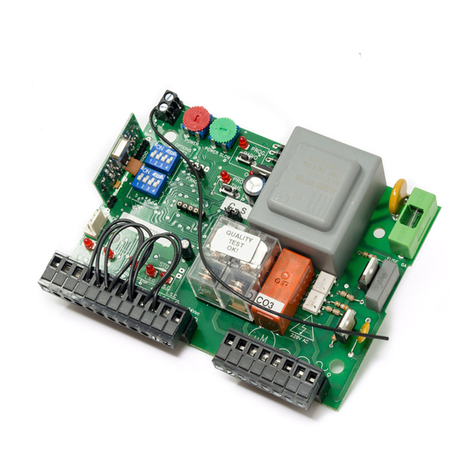
vds
vds EURO230M1 instruction manual
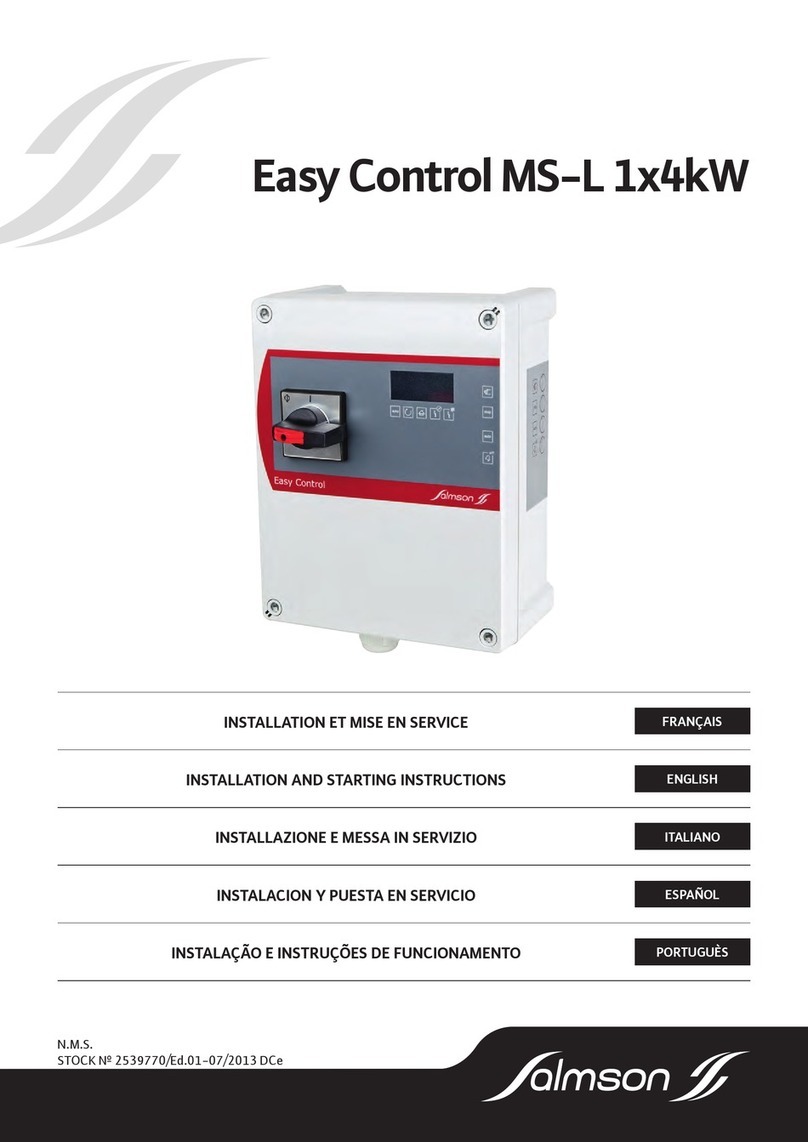
salmson
salmson Easy Control MS-L 1x4kW Series Installation and starting instructions

Truma
Truma CP plus Operating and installation instructions
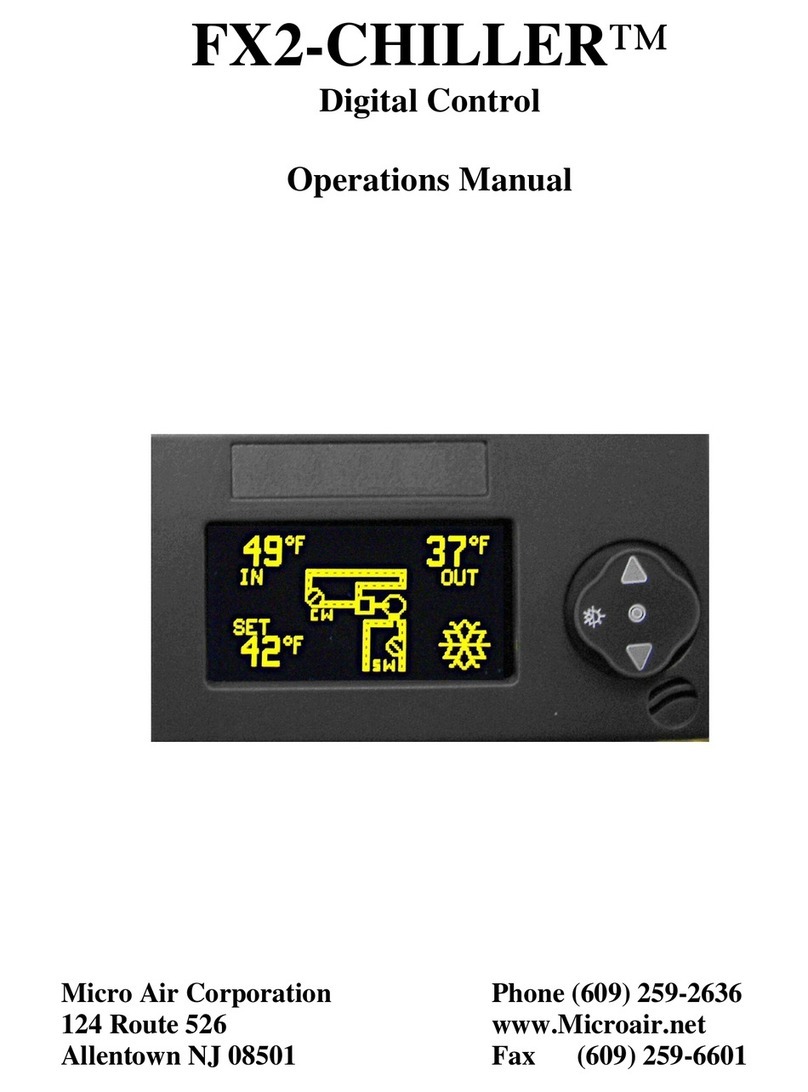
Micro Air Corporation
Micro Air Corporation FX2-CHILLER Operation manual

Siemens
Siemens MTP700 Unified Comfort Compact operating instructions
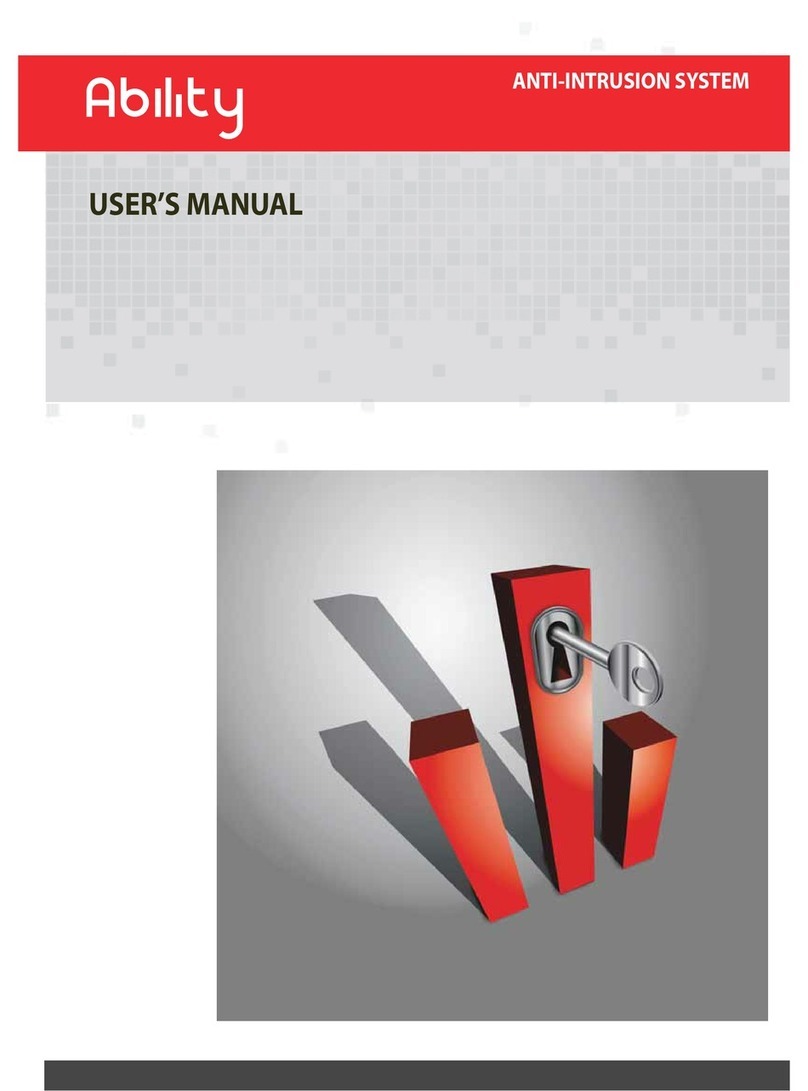
Ability
Ability 510M user manual

